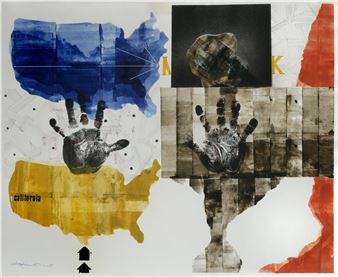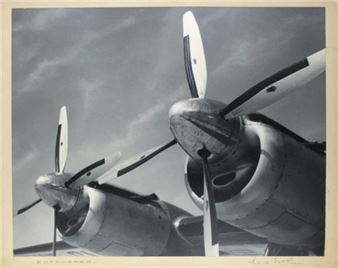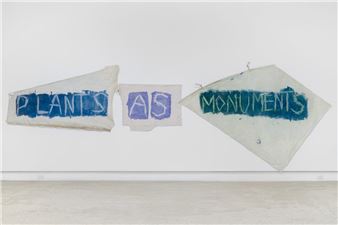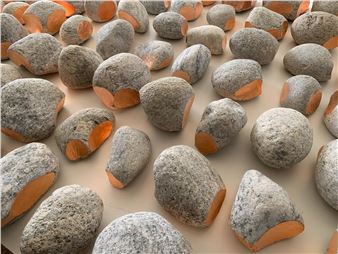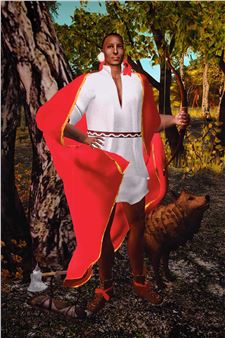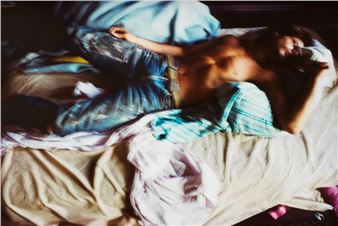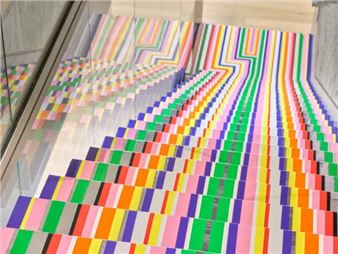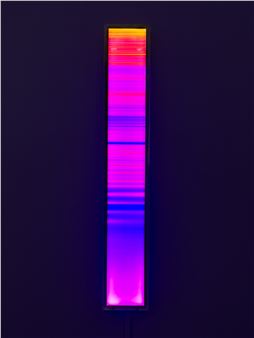Stephen Waddell: Visible Light
Stephen WaddellÔÇÖs new exhibition includes a collection of photographs that portray different forms of light, both aesthetic and psychological. The individual works demonstrate the extremes of how visible light can build our view, and that which is captured by the camera.
On one level, the works demonstrate the physical conditions of light, and the aesthetic recognition of this light through the camera. WaddellÔÇÖs large-scale colour photograph Sunflowers depicts the distinct light just before sunset, the time when sunlight turns from neutral to recognizably yellow/orange. The quality of this specific light sculpts the scene, accentuating high relief and emphasizing depth as a woman waters her garden. In contrast, David is a silver gelatin photograph printed to create a light that is almost anti-sculptural; the low contrast of the image creates a flattening effect, collapsing foreground and background and causing the materiality of the subject (a sculpture) to compete with the materiality of the photographic print (literally, two dimensional).
Exploring the psychological aspects of light, Kammerspiele shows the illuminated interior of a cave, emanating light from an unknown source within. The dark exterior of the cavern delineates aesthetic parameters around the light, creating an enclosed circle like a mouth, skull, or subterranean netherworld. The motif of an oval or circle echoes Copernican-era depictions of earth and the Garden of Eden, where an enclosed area is shown with an entrance and an exit. Paintings by Lucas Cranach and Hieronymus Bosch depict this contracted space, a reflection of the time and limited knowledge of the world.
The large colour photograph Hive Burner directly references CranachÔÇÖs The Golden Age, where a circular concrete ruin sits among grass and greenery, and figures sit, stand, and walk as though composed in the scene. In this photo, the dilapidated structure (leftover from a now non-existent wood mill) sits near the shore where a large tanker, ubiquitous with VancouverÔÇÖs waterways, can be seen in the background. WaddellÔÇÖs version of a ÔÇ£Golden AgeÔÇØ sits in contrast to CranachÔÇÖs depictions of utopia and paradise, and offers a misanthropic albeit similarly pastoral view of our present-day.
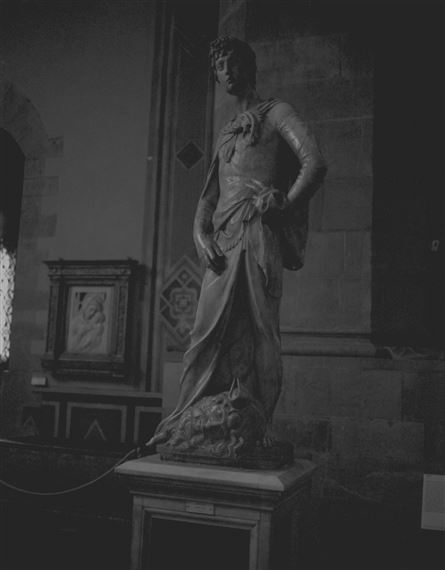
Recommended for you
Stephen WaddellÔÇÖs new exhibition includes a collection of photographs that portray different forms of light, both aesthetic and psychological. The individual works demonstrate the extremes of how visible light can build our view, and that which is captured by the camera.
On one level, the works demonstrate the physical conditions of light, and the aesthetic recognition of this light through the camera. WaddellÔÇÖs large-scale colour photograph Sunflowers depicts the distinct light just before sunset, the time when sunlight turns from neutral to recognizably yellow/orange. The quality of this specific light sculpts the scene, accentuating high relief and emphasizing depth as a woman waters her garden. In contrast, David is a silver gelatin photograph printed to create a light that is almost anti-sculptural; the low contrast of the image creates a flattening effect, collapsing foreground and background and causing the materiality of the subject (a sculpture) to compete with the materiality of the photographic print (literally, two dimensional).
Exploring the psychological aspects of light, Kammerspiele shows the illuminated interior of a cave, emanating light from an unknown source within. The dark exterior of the cavern delineates aesthetic parameters around the light, creating an enclosed circle like a mouth, skull, or subterranean netherworld. The motif of an oval or circle echoes Copernican-era depictions of earth and the Garden of Eden, where an enclosed area is shown with an entrance and an exit. Paintings by Lucas Cranach and Hieronymus Bosch depict this contracted space, a reflection of the time and limited knowledge of the world.
The large colour photograph Hive Burner directly references CranachÔÇÖs The Golden Age, where a circular concrete ruin sits among grass and greenery, and figures sit, stand, and walk as though composed in the scene. In this photo, the dilapidated structure (leftover from a now non-existent wood mill) sits near the shore where a large tanker, ubiquitous with VancouverÔÇÖs waterways, can be seen in the background. WaddellÔÇÖs version of a ÔÇ£Golden AgeÔÇØ sits in contrast to CranachÔÇÖs depictions of utopia and paradise, and offers a misanthropic albeit similarly pastoral view of our present-day.
Artists on show
Contact details

Related articles
Stephen WaddellÔÇÖs latest solo exhibition, ÔÇ£Visible Light,ÔÇØ aims to create a conversation between the aesthetic function of light and light as an essential metaphor within the archetypes of art and literature.

 ARTISTS
ARTISTS







